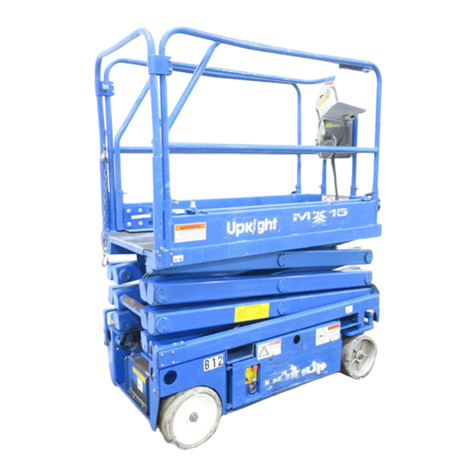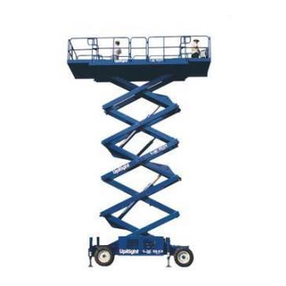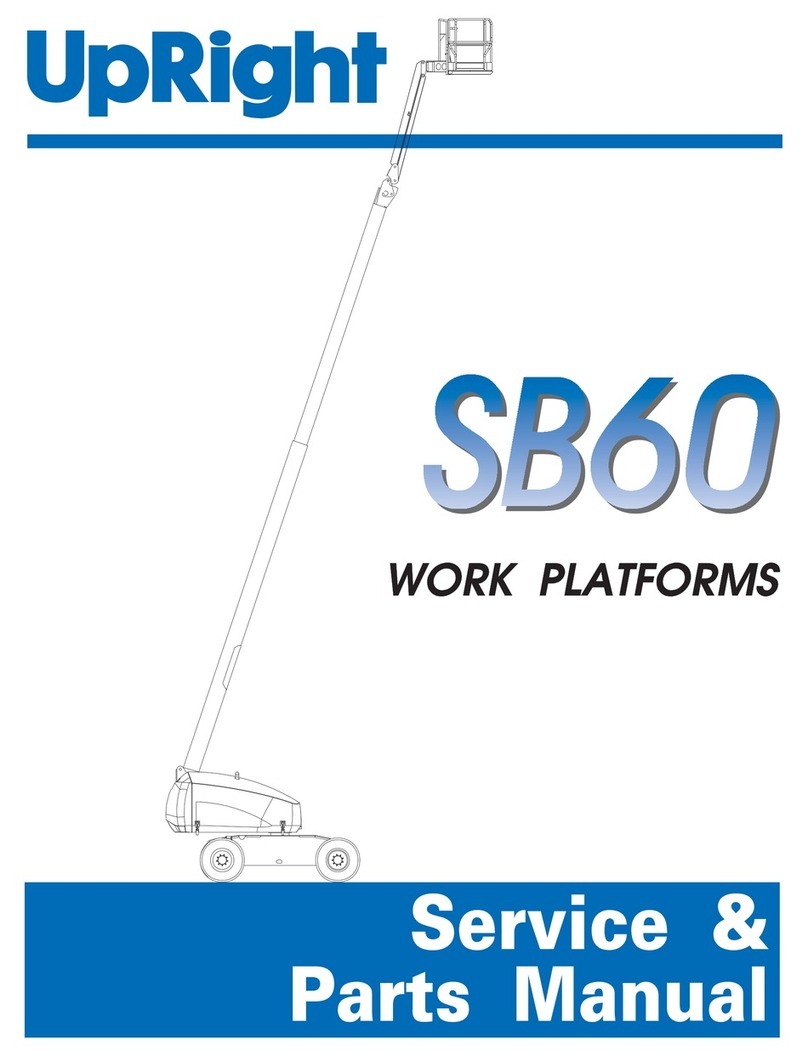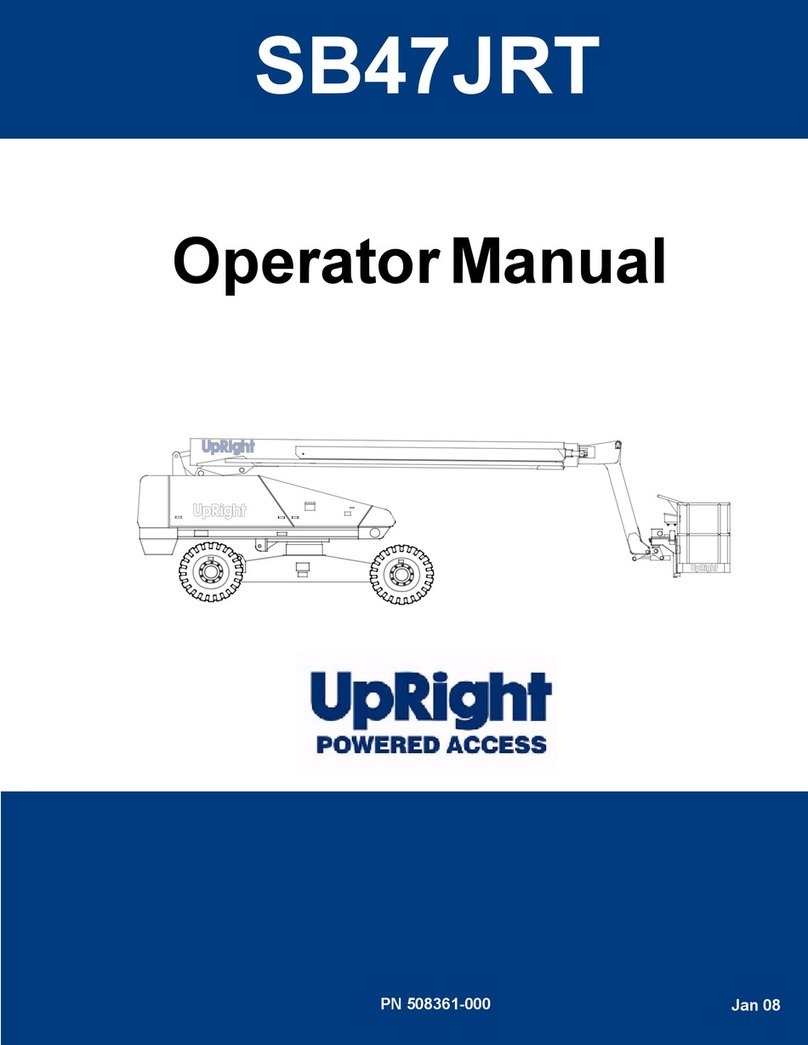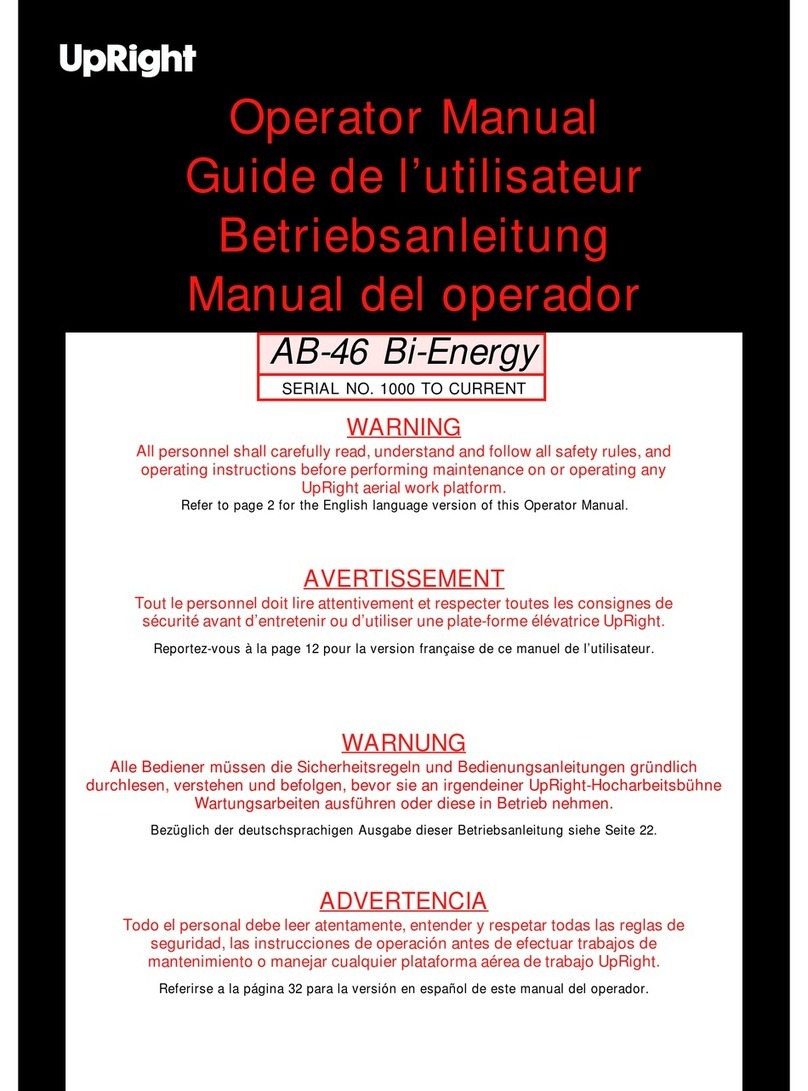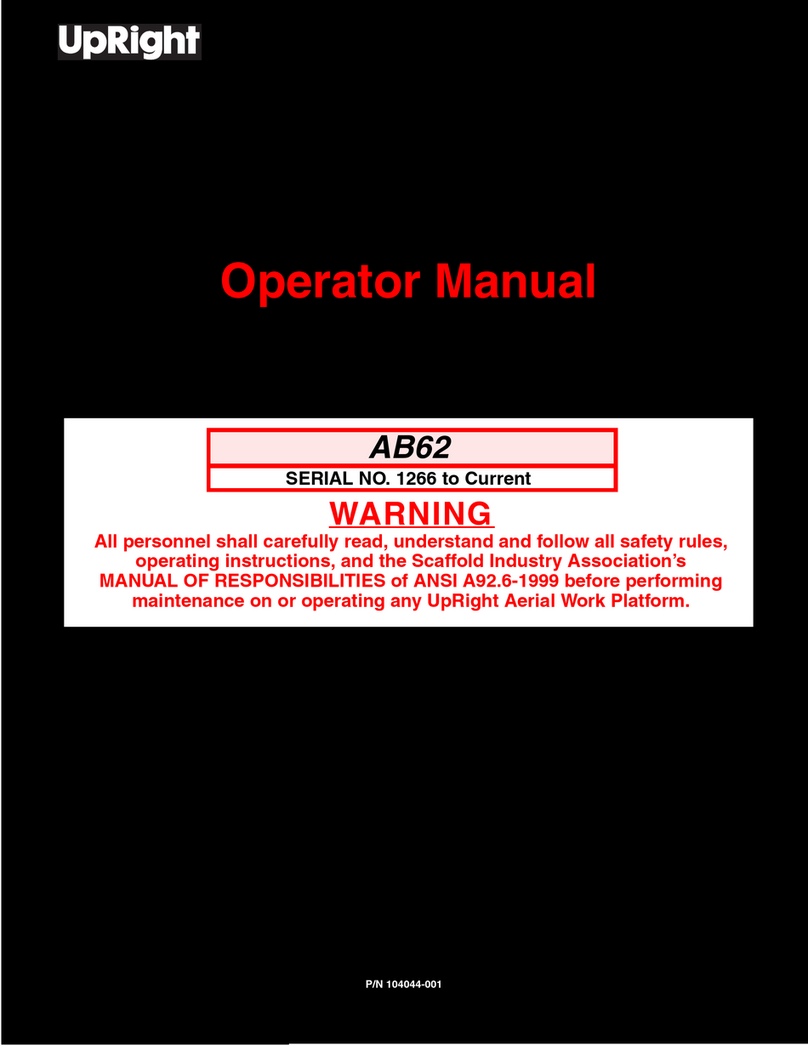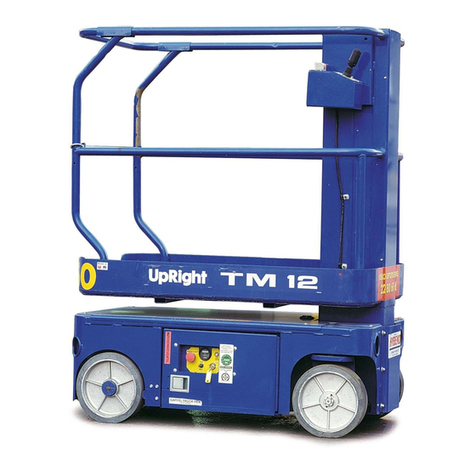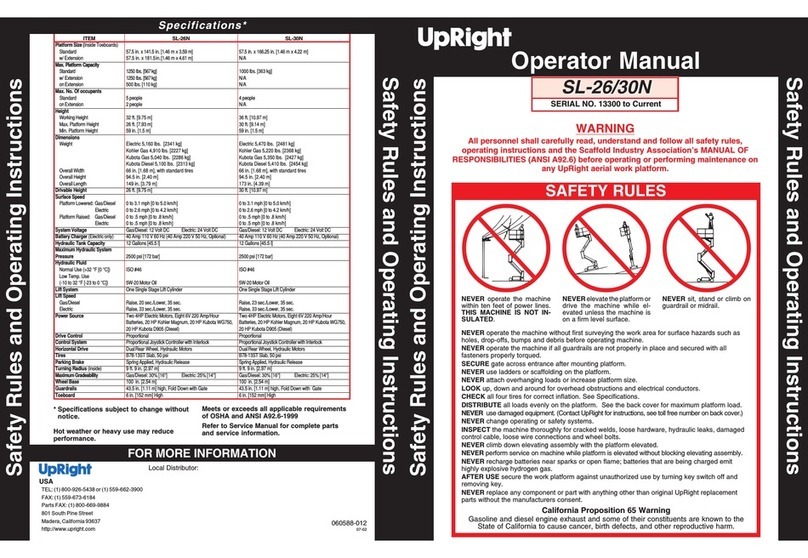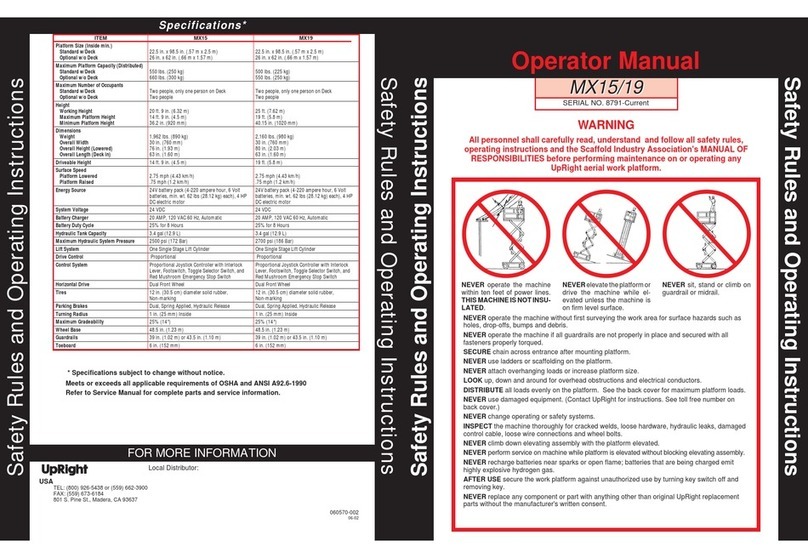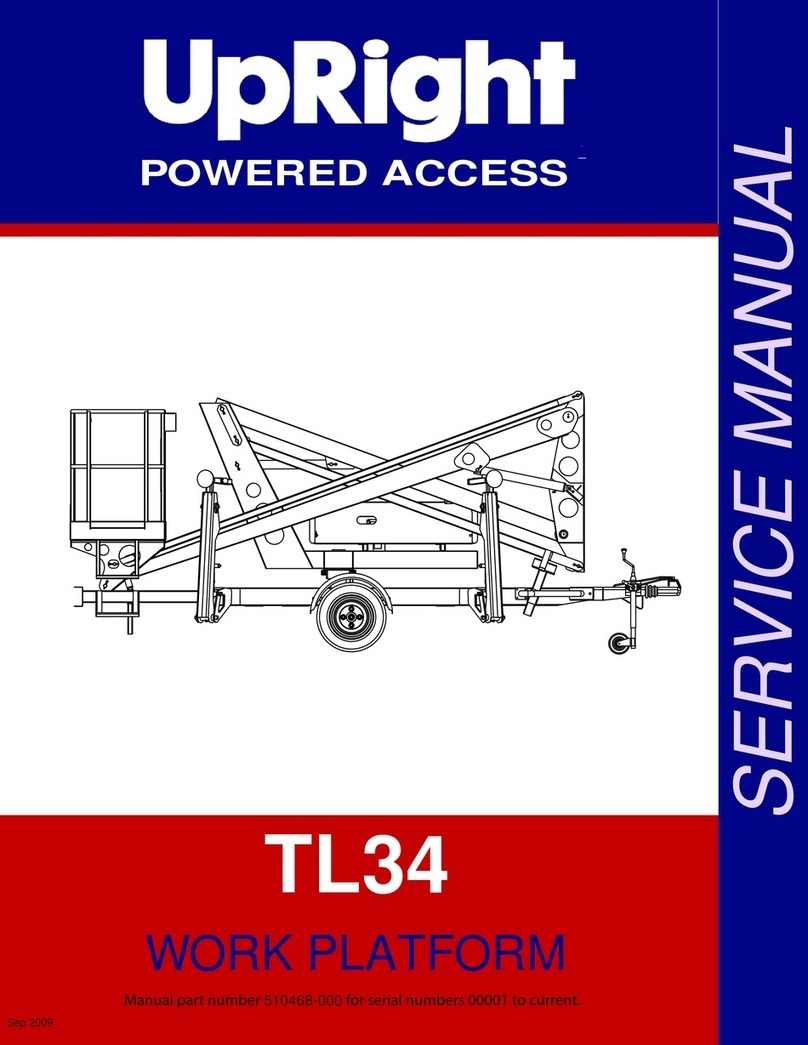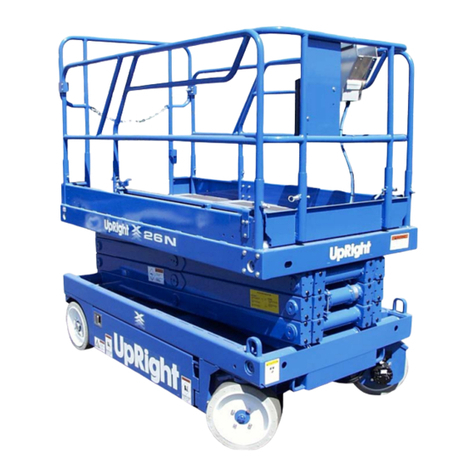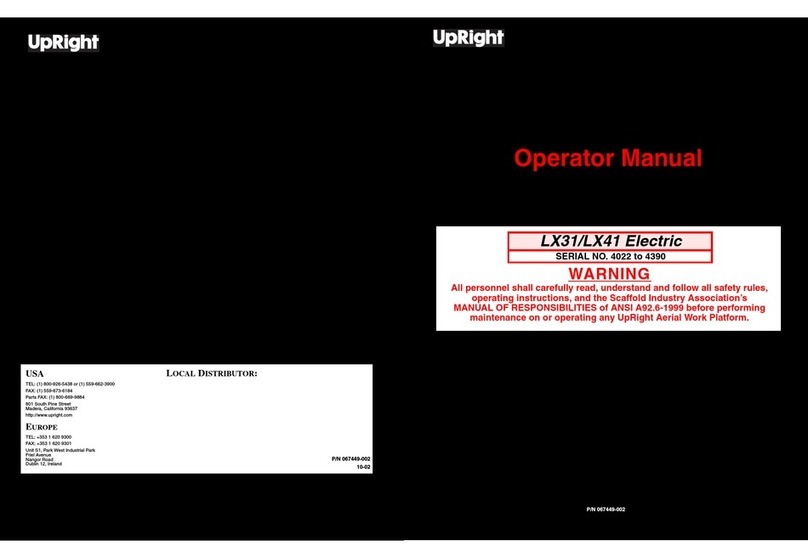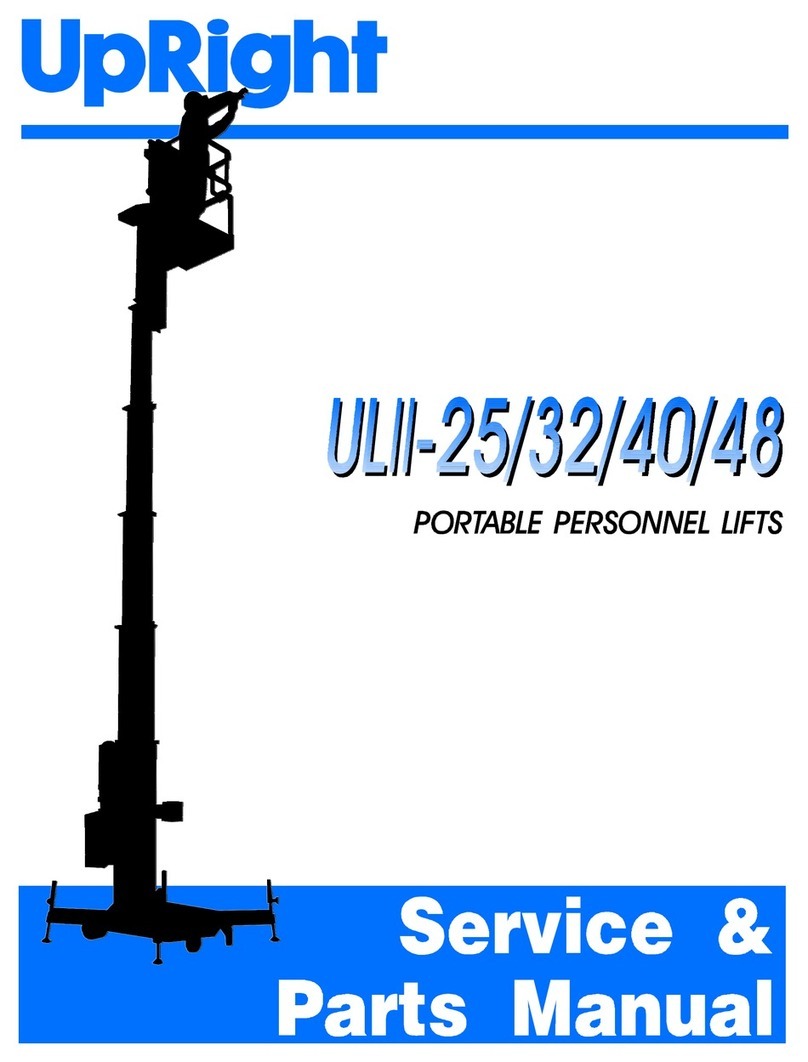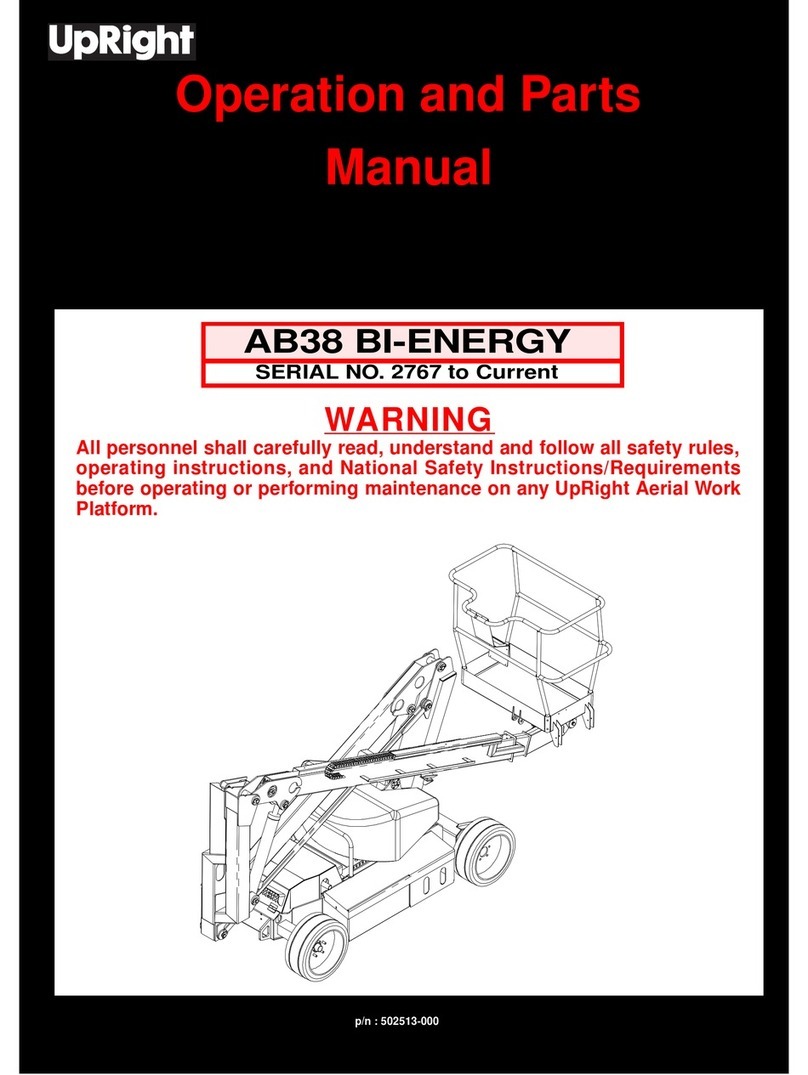
AB62 Work Platform - European iii
T
ABLE OF
C
ONTENTS
S
ECTION
1
Introduction&Specifications ...........................................................1-1
1.1Introduction.............................. 1-1
Purpose ................................ 1-1
Scope .................................. 1-1
1.2GeneralDescription....................... 1-1
Platform ................................ 1-1
PlatformController ........................ 1-1
ElevatingAssembly ....................... 1-1
Chassis ................................. 1-1
1.3PurposeOfEquipment..................... 1-1
1.4SpecialLimitations........................ 1-1
1.5Specifications............................ 1-2
S
ECTION
2
MachinePreparation&Operation .......................................................2-1
2.1Introduction.............................. 2-2
2.2Pre-OperationandSafetyInspection......... 2-2
SystemFunctionInspection ................. 2-2
2.3ControlsandIndicators.................... 2-3
2.4Operation................................ 2-4
....................................... 2-4
FromtheLowerControls ................... 2-4
FromthePlatformControls.................. 2-4
WithBoomLowered ....................... 2-4
WithBoomElevated ....................... 2-5
Steering ................................ 2-5
PositioningthePlatform .................... 2-5
MultifunctionControls ...................... 2-5
LowerControlOperation.................... 2-5
EmergencyOperation...................... 2-6
EmergencyTowing ........................ 2-6
2.5Transportation ........................... 2-7
ByTruckorTrailer ........................ 2-7
AfterUseEachDay ....................... 2-7
....................................... 2-7
2.6Maintenance............................. 2-8
Fueling ................................. 2-8
HydraulicOil ............................. 2-8
Lubrication .............................. 2-8
BatteryMaintenance....................... 2-8
Tires ................................... 2-8
S
ECTION
3
Maintenance..........................................................................3-1
3.1Introduction.............................. 3-1
3.2SpecialTools............................. 3-1
UpRightConnectors ....................... 3-2
3.3PreventativeMaintenance.................. 3-3
Preventative Maintenance Table Key . . ........ 3-4
Preventative Maintenance Report ............ 3-4
3.4 Supporting Elevating Assembly (Figure 3-6) . . . 3-5
Installation............................... 3-5
Removal ................................ 3-5
3.5BatteryMaintenance....................... 3-6
BatteryInspectionandCleaning.............. 3-6
BatteryCharging.......................... 3-6
3.6Lubrication .............................. 3-6
GreaseFittings ........................... 3-6
LubricatingTurretGears.................... 3-6
HydraulicOilandFilter ..................... 3-7
3.7TiltSensor(Figure3-11).................... 3-8
3.8HydraulicManifold(Figure3-14)............. 3-9
Removal ................................ 3-9
Disassembly ............................. 3-9
CleaningandInspection.................... 3-9
Assembly ............................... 3-9
Installation .............................. 3-9
3.9 Setting Hydraulic Pressures . . . ............ 3-10
HighFlowReliefValve(#5) ................ 3-10
LowFlowReliefValve(#9)................. 3-10
CounterbalanceReliefValves .............. 3-10
3.10TorqueHubs........................... 3-12
ChangingFluid .......................... 3-12
TorqueHubRemoval ..................... 3-12
Installation ............................. 3-12
Disassembly of Torque Hub (Figure 3-16) . . . . . 3-13
AssemblyofTorqueHub .................. 3-13
CarrierAssemblies ....................... 3-14
Sealing Compound . . . .................... 3-14
